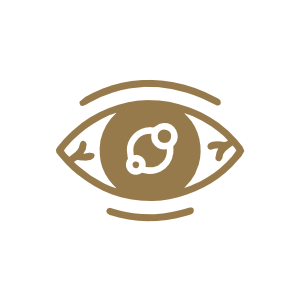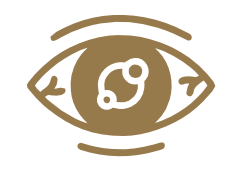Resources
Senior Eye Care Guide for Elderly Patients and Caregivers
As we age, our eyes undergo natural changes that can affect vision and quality of life. Regular eye care is essential for seniors to maintain their independence and prevent vision loss. This guide provides an overview of why regular eye exams are important for older adults, how often seniors should get eye exams, common age-related eye conditions to be aware of, and information about vision care coverage (including Medicare and Florida-specific programs). We also include helpful tips for maintaining healthy vision and trusted resources for senior eye care. The tone is professional and clinical, yet approachable for family caregivers.
Importance of Regular Eye Exams for Seniors
Many serious eye diseases can develop with few or no symptoms in the early stages aoa.org. By the time noticeable vision changes occur, the condition may be advanced. Regular comprehensive eye exams allow eye doctors to detect issues like cataracts, glaucoma, or macular degeneration at an early stage when treatment can be most effective cdc.govcdc.gov. Early detection and treatment greatly improve the chances of preserving vision as one ages aoa.org.
Vision and safety: Good eyesight is critical for safe driving, reading medication labels, avoiding falls, and enjoying daily activities. In fact, some state laws underscore this importance. For example, Florida requires drivers aged 80 and older to pass a vision test at each license renewal millenniumeyecenter.com. This ensures that seniors have sufficient vision to drive safely. Regular eye exams help seniors and their caregivers stay ahead of such requirements by keeping prescriptions up to date and addressing vision issues that could impair driving or daily functioning aoa.org. If any sudden changes in vision occur (such as flashes of light, sudden blurriness, or loss of vision), see an eye care professional immediately aoa.org – prompt evaluation can prevent permanent damage.
How Often Should Older Adults Have Eye Exams?
Recommended frequency: Health experts agree that older adults need more frequent eye check-ups. The American Optometric Association (AOA) recommends annual eye examinations for everyone over age 60 aoa.org. Similarly, the American Academy of Ophthalmology suggests seniors aged 65 and above have a comprehensive dilated eye exam every 1 to 2 years (more often if you have risk factors or existing eye conditions) mayoclinic.org. Your eye doctor may advise a specific exam schedule based on your individual health and vision history. For instance, someone with diabetes or a family history of glaucoma might need yearly exams even before age 60.
It’s important for caregivers to help ensure seniors stick to a regular exam schedule. Mark calendars with annual appointments and set reminders, since early detection of problems can save eyesight aoa.org. Even if an older person feels their vision is fine, preventive eye exams can catch issues that seniors themselves haven’t noticed yet. In fact, only about half of people at high risk for vision loss (such as those with diabetes or history of eye disease) visit an eye doctor each year – but regular care can significantly reduce the chance of severe vision impairment cdc.gov. As a rule of thumb, at least once a year is ideal for seniors, and immediately if there are any vision changes or new symptoms.
Common Age-Related Eye Conditions in Seniors
A number of eye conditions become more common with age. Understanding these conditions can help seniors and caregivers know what to watch for and discuss during eye exams nei.nih.govnei.nih.gov. Below are some of the most common age-related eye issues:

Cataracts
A cataract is a clouding of the eye’s normally clear lens, leading to blurry or dim vision. Cataracts can make it harder to read or drive, especially at night, and colors may appear faded floridaeyespecialists.com. They develop slowly with age and are very common – in fact, cataracts are the leading cause of vision loss in the United States floridaeyespecialists.comcdc.gov. Treatment involves surgery to replace the cloudy lens, which is very effective. Protecting eyes from UV light (with sunglasses and hats) can slow cataract formation floridaeyespecialists.com.

Glaucoma
Glaucoma refers to a group of diseases that damage the optic nerve (often associated with high pressure inside the eye). It causes gradual loss of peripheral (side) vision, and can eventually lead to blindness if not treated aoa.org. Glaucoma is often called the “silent thief of sight” because it typically has no obvious early symptoms – vision loss happens so slowly that one might not notice until significant damage is done aoa.org. Risk increases with age; those over 60, and individuals with a family history or of African, Asian, or Hispanic heritage are at higher risk aoa.org. Early detection through routine eye exams is crucial, as treatments (like eye drop medications or surgery) can preserve vision aoa.org.

Age-Related Macular Degeneration (AMD)
AMD affects the macula, the central part of the retina responsible for sharp, detailed vision. It causes a progressive loss of central vision (what you see when looking straight ahead), making tasks like reading, driving, or recognizing faces difficult aoa.org. Peripheral vision usually remains normal, but AMD can create a blurry or dark spot in the center of one’s view aoa.org. AMD is a leading cause of blindness in Americans over 55 floridaeyespecialists.com. Early AMD may have no symptoms, so dilated eye exams are key to catching it early. There are treatments (for certain types of AMD) that can slow vision loss, and low-vision aids to help those with permanent vision changes.

Dry Eye
Dry eye syndrome is very common in older adults. It occurs when the eyes don’t produce enough tears or the tears evaporate too quickly, leading to irritation and blurry vision aoa.org. Symptoms include stinging, burning, or a gritty feeling in the eyes, and sometimes watery eyes (excess tearing as a reflex). Dry eye can be chronic, but there are treatments such as lubricant eye drops, prescription medications, and lifestyle changes (like using a humidifier) to manage it aoa.org. An eye doctor can advise on the best remedies for chronic dry eye.

Presbyopia
Presbyopia is an age-related focusing change that affects near vision. Starting in one’s 40s, the eye’s lens naturally stiffens, making it harder to focus on close objects – seniors may notice they need to hold reading materials farther away to see clearly aoa.org. This is why many older adults require reading glasses or bifocals. Presbyopia is not a disease but a normal aging process that virtually everyone experiences to some degree aoa.org. Proper eyeglass prescriptions (reading glasses, bifocals, progressives, etc.) can correct presbyopia, so routine eye exams will ensure seniors have the right lenses to comfortably read and do close work.

Diabetic Retinopathy
(For seniors with diabetes) Diabetes can damage the small blood vessels in the retina, causing a condition known as diabetic retinopathy. It’s a leading cause of blindness in adults in the US cdc.gov. Early on, there may be no symptoms, or mild blurriness, but over time it can lead to serious vision loss if uncontrolled. Tight control of blood sugar and yearly dilated eye exams are vital for diabetics to catch retinopathy early cdc.gov. Treatments like laser therapy or injections can prevent vision loss in many cases, especially when started early cdc.gov. Seniors with diabetes should be diligent about annual eye exams (Medicare actually covers a yearly diabetic eye exam – see next section) ncoa.org.
Vision Care Coverage for Seniors (Medicare & Florida-Specific Info)
Understanding what vision services are covered by insurance is important for seniors on fixed incomes. Below is an overview of Medicare coverage for eye care, as well as Florida-specific vision programs and considerations.
Medicare (Federal): Medicare is a federal health insurance program for people 65 and older (and some younger with disabilities).
Original Medicare (Part A and Part B) generally does not cover routine eye exams for eyeglasses or contact lenses ncoa.org. This means seniors usually pay out-of-pocket for annual refraction exams to update their glasses. Original Medicare also doesn’t cover eyeglasses or contacts in most cases ncoa.org (the major exception being one pair of standard glasses after cataract surgery, which is covered ncoa.org). However, Medicare Part B does cover certain eye care services that are considered medically necessary:
Glaucoma screening

Part B covers an annual glaucoma test for those at high risk, such as people with diabetes, a family history of glaucoma, African Americans over 50, or anyone over 60 ncoa.org.
Diabetic eye exams

Part B covers a yearly dilated eye exam to check for diabetic retinopathy for patients with diabetes ncoa.org.
Macular degeneration

Diagnostic tests and treatments (like injections) for age-related macular degeneration are covered if you have that condition ncoa.org.
Cataract surgery

If cataracts sufficiently impair vision, Medicare Part B covers cataract surgery. It will also pay for a basic intraocular lens implant and one set of prescription eyeglasses or contact lenses after the surgery ncoa.org.
For these Part B services, Medicare typically covers 80% of the approved amount and the senior is responsible for the remaining 20% (either out-of-pocket or via a Medigap supplemental plan), after the annual Part B deductible ncoa.org.
Medicare Advantage (Part C): Many seniors in Florida and elsewhere opt for Medicare Advantage plans. These are private insurance plans that replace Original Medicare and often include extra benefits. Most Medicare Advantage plans offer vision care benefits that Original Medicare lacks ncoa.org. This can include routine annual eye exams, coverage for eyeglasses or contact lenses, and even discounts on upgrades like progressive lenses. Coverage details vary by plan, so seniors and caregivers should check plan specifics. For instance, a plan might provide one eye exam and a $200 eyewear allowance each year. If vision care is important, it’s worth comparing Medicare Advantage plans during open enrollment to find one that includes robust eye care benefits ncoa.org.
- Medicaid (Florida): Medicaid is a joint federal-state program that can help low-income seniors (often those who are “dual eligible” for Medicare and Medicaid) with healthcare costs. In Florida, Medicaid does provide some vision coverage for adults, although it is limited. Typically, Florida Medicaid covers one routine eye exam per year and glasses as needed (usually one pair of frames every two years, with new lenses yearly if your prescription changes) sunshinehealth.com. Coverage can depend on the specific Medicaid managed care plan. For example, some plans offer an eye exam and new glasses annually sunshinehealth.com. While Medicaid’s vision benefits for adults are not extensive, they do ensure basic eye care is accessible. Seniors who qualify for Medicaid should contact their plan or Florida Medicaid offices to understand their vision benefits. Caregivers can assist by locating providers who accept Medicaid (not all optometrists or ophthalmologists do, due to low reimbursement rates).
- Florida State Resources: Florida has a large senior population, so there are agencies and programs to support elder eye health:
- The Florida Division of Blind Services offers resources and rehabilitation training for residents with severe vision loss or blindness. If a senior has significant vision impairment (even with glasses), this state agency can provide assistive devices, mobility training, and other support to help them remain independent.
- Area Agencies on Aging in Florida can connect seniors and caregivers with local programs, which sometimes include free vision screenings or assistance programs. For example, non-profits or health departments may host vision clinics for seniors.
Driver’s License Vision Requirement: As mentioned earlier, Florida mandates vision testing for drivers 80+ millenniumeyecenter.com. Seniors can get this test done by their eye doctor (who must fill out a form) or at a driver license office. Keeping up with routine exams makes this requirement easier to meet, ensuring the senior remains legally cleared to drive.
Tips for Maintaining Healthy Vision as You Age
While regular eye exams are the cornerstone of senior eye care, lifestyle and daily habits also play a significant role in keeping eyes healthy. Here are some caregiver-friendly tips to help older adults maintain the best vision possible:
Wear Sunglasses and Eye Protection:
Cumulative exposure to ultraviolet (UV) light contributes to cataract development and macular degeneration. Wearing UV-blocking sunglasses and a wide-brimmed hat when outdoors is highly recommended, especially in sunny climates like Florida floridaeyespecialists.com. Research suggests up to 20% of cataract cases may be attributable to UV exposure, meaning many cataracts could be prevented or delayed with proper eye protection floridaeyespecialists.com. Choose sunglasses that block 99-100% of UVA and UVB rays. This not only slows cataracts but also protects against retinal damage and even eyelid skin cancer floridaeyespecialists.com. (Year-round use is wise – the Florida sun is intense even in winter floridaeyespecialists.com.)
Eat a Nutritious, Eye-Healthy Diet:
A diet rich in fruits and vegetables – particularly dark leafy greens like spinach and kale – and foods high in Omega-3 fatty acids (such as salmon or flaxseed) can support eye health aao.org. Nutrients like lutein, zeaxanthin, vitamin C, vitamin E, and zinc have been linked to lower risk of AMD or slowing its progression aao.org. For example, the National Eye Institute recommends diets including these nutrients (or supplements in some cases) for macular degeneration management. Encourage seniors to enjoy a colorful plate of veggies and perhaps discuss with their doctor if an eye vitamin is appropriate.
Manage Chronic Health Conditions:
Conditions like diabetes and hypertension (high blood pressure) can significantly affect eye health aoa.org. Keeping blood sugar and blood pressure under control will reduce the risk of diabetic retinopathy and hypertensive retinopathy, as well as glaucoma and stroke-related vision issues. Ensure seniors take their medications as prescribed and follow medical advice for managing chronic diseases – doing so helps protect their eyesight aoa.org. If the senior is diabetic, controlling blood sugar can prevent 90% of diabetes-related vision loss cdc.gov.
Don’t Smoke (and Avoid Secondhand Smoke):
Smoking has a very harmful effect on the eyes. It greatly increases the risk of developing cataracts and macular degeneration – studies show smokers are about 2–3 times more likely to get cataracts and up to 4 times more likely to develop AMD compared to non-smokers fda.gov. Quitting smoking (or never starting) is one of the best lifestyle choices for eye health fda.gov. If the senior is a smoker, seek resources to help them quit; if they live with smokers, try to maintain a smoke-free home environment. The eyes and overall health will benefit.
Use Adequate Lighting and Reduce Fall Hazards:
Aging eyes often need more light to see clearlyaoa.org. Increase the brightness of lights in commonly used areas – for example, reading lamps by chairs, night lights in hallways, and brighter task lighting in kitchens and workshops. Good lighting helps prevent falls and accidents by making obstacles more visible. Likewise, high-contrast markings (like bright tape on step edges) can assist those with low vision. Caregivers can help by ensuring the senior’s home is well-lit and free of tripping hazards. This is a simple but important part of vision safety.
Assistive Vision Aids and Tech:
If a senior has some vision loss, numerous low-vision aids can help them continue activities they enjoy aoa.orgaoa.org. Examples include magnifying reading glasses, handheld magnifiers, high-contrast large-print books, talking watches, and electronic video magnifiers that display magnified text on a screen. Many smartphones and tablets also have accessibility features like font size adjustment or text-to-speech. Encourage utilizing these tools. An eye doctor or low-vision specialist can recommend specific devices. Vision rehabilitation services are available to train seniors in using these aids and adapting their routines – these services can dramatically improve quality of life and independence nei.nih.gov.
Helpful Resources for Senior Eye Care
For those who want to learn more or need assistance, here are some trusted external resources. These organizations provide reliable information and services related to vision and aging:
- American Optometric Association (AOA) – The AOA’s website offers patient resources on healthy eyes at every age. Their “Senior Vision” section provides detailed information on age-related vision changes and tips for adapting to them aoa.orgaoa.org. The site also has a doctor locator to find a local optometrist. (Visit: AOA Senior Eye Health for guidance on vision after 60.)
- American Academy of Ophthalmology (AAO) – EyeCare America: EyeCare America is a public service program by AAO’s Foundation that connects eligible seniors with free eye exams. Seniors age 65+ who have not had a recent eye exam and do not have an eye doctor may qualify for an exam at no cost ncoa.org. This is an excellent resource for those who worry about affordability. (Learn more: EyeCare America – Seniors Program.) In addition, AAO’s patient education site (EyeSmart) has a wealth of articles on cataracts, glaucoma, and other eye conditions in senior-friendly language.
- National Eye Institute (NEI) – NEI, part of the NIH, provides up-to-date research-based information on eye conditions and healthy vision. They have dedicated resources on vision and aging, including fact sheets and tips for protecting vision as you get oldernei.nih.gov. NEI also lists programs that can help with low-cost eye care if you can’t afford it nei.nih.govnei.nih.gov. (Check out: NEI – Aging and Your Eyes and NEI Low-Cost Eye Care.)
- Medicare.gov – Vision Coverage Information: The official Medicare website clearly outlines what is and isn’t covered regarding eye care. This is useful for caregivers helping a senior navigate their benefits. For example, Medicare.gov explains that routine eye exams and glasses are not covered by Original Medicare medicare.gov, and it provides details on covered glaucoma screenings, post-cataract glasses, etc. (See: Medicare Vision Coverage on Medicare.gov.) Seniors and caregivers can also call 1-800-MEDICARE for specific questions about coverage.
- Florida Local Resources: For Florida residents, the Florida Department of Elder Affairs (DOEA) and local Area Agencies on Aging can be a starting point to find vision-related assistance. They may help connect you to free screening events or services like transportation to medical appointments. The Florida Division of Blind Services has regional offices that offer support for visually impaired seniors (orientation and mobility training, independent living skills, etc.). (Find more at: Florida DOEA or call the Florida Elder Helpline at 1-800-96-ELDER.)
Non-Profit Organizations: National non-profits like Prevent Blindness and the Lions Club also have programs for seniors. Lions Clubs in many Florida communities have initiatives to assist individuals with severe vision impairment or those who need help obtaining eyeglasses ncoa.org. Prevent Blindness offers educational materials and sometimes vouchers for eye exams or glasses for those in need. These organizations can be valuable allies in maintaining senior eye health.
